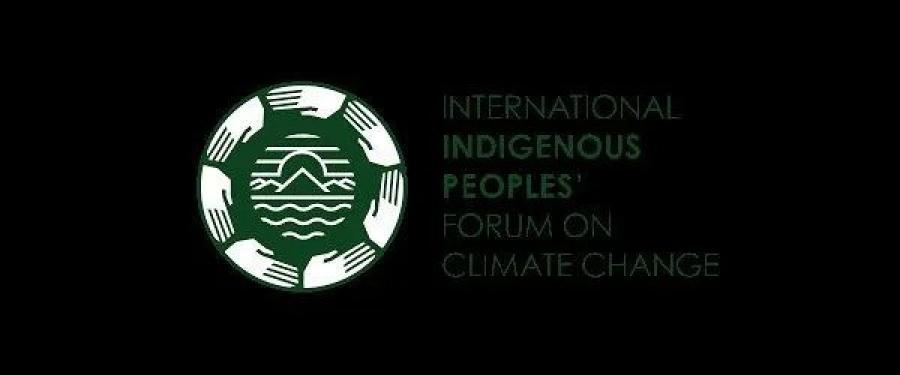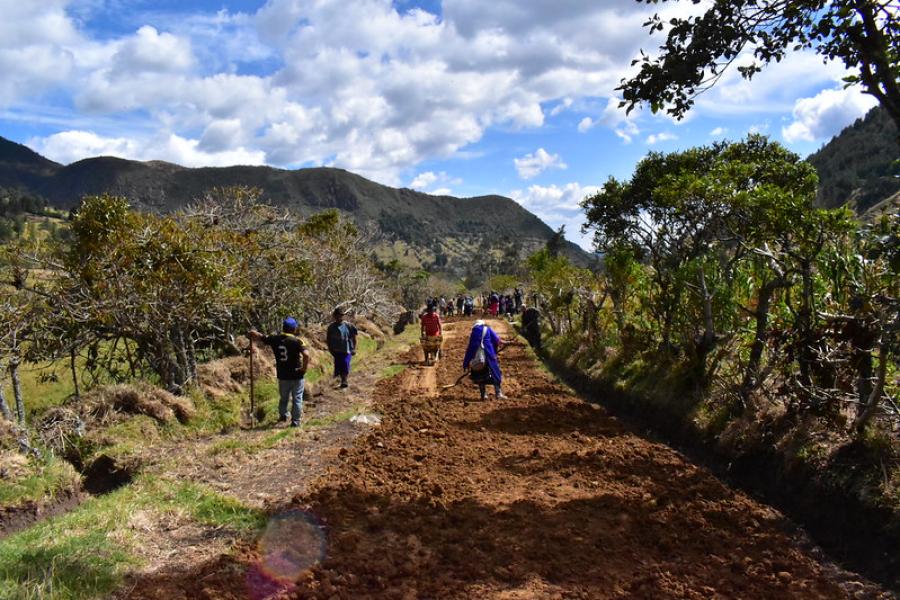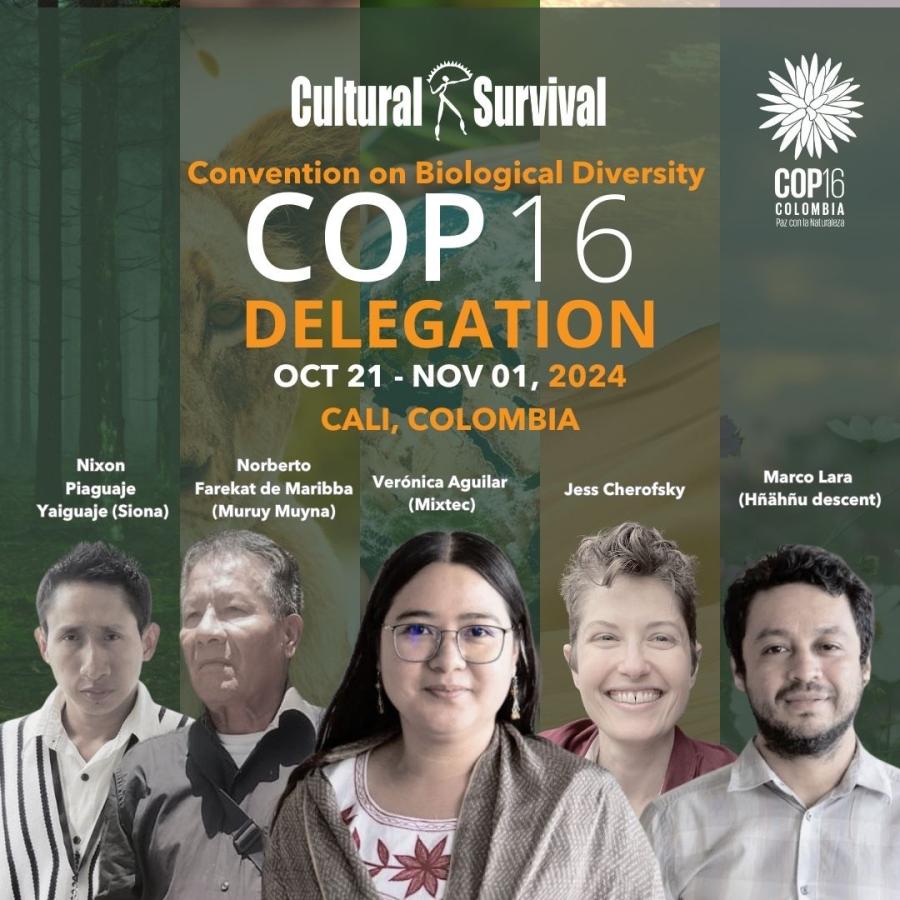Djupurula's community looked like so many indigenous villages, dilapidated and silent. It's the silent part I always find most troubling. So often, communal enterprise breaks down, replaced by individual interests that don't really benefit the individual or the tribe. Djupurula, a young Aboriginal man, and I met in the Outback, some 30 miles outside Alice Springs. When he discovered that I was an anthropology professor, he invited me to go out hunting bushtucker. Miles from anywhere, we found a bit of fruit and a few grubs, then sat down out of the sun to snack. Aside from a stark green and white band of ghost gum trees, the land was a deep red. I leaned back, listening to my companion's ancestral creation stories. Djupurula's uncle had mentioned that morning how important it is that his nephews and nieces listen to the stories. "That's the problem, you know," he said. "The young people only care about the outside now." This, I had heard countless times before. Djupurula finished the telling. He sat drawing circles in the sand with his digging stick. With huge eyes, he looked at me and, whispering as though someone might hear, said, "Tell me, where did we really come from?" I was glad to be able to tell him that although there are theories, I honestly didn't know. It's not always that easy.
One similarity among nearly all First Peoples is a deep respect for the power of information. They share knowledge with care. Knowing that we have evolved to live in communal groups, it comes as no surprise that what keeps communities like Djupurula's healthy can be found in the most basic of human pursuits: learning and relationships. The healing of damaged communities likewise depends on the preservation of traditional relationships -- storytelling, for example -- and the development of new ones.
Learning and Relationships
Learning is the biological mechanism of adaptation; we are designed for lifelong learning. If our ancestors were unable to learn as conditions changed, they wouldn't have survived long. It helped, of course, when they shared information vital to survival. In our earliest history, the only ways to learn were firsthand, which could be very dangerous, or from others. Because we couldn't learn everything in one sitting, we went back, again and again, to those who knew to further our understanding.
Group storytelling, or communal learning, benefited everyone. Even today, when people share in this way, it reinforces a sense of obligation and builds mutual respect. Sharing valuable information creates interdependence.
People love to share information; that's how they learn from each other and get to know one another. Until recently, most tribal peoples learned from those they knew well, and were most likely to share knowledge with others within their own group. Like the stories Djupurula learned from his uncle, these exchanges helped new generations learn who they were and how they fit into the community. To the young, adults were sources of wisdom. They passed on the knowledge needed to survive, not only physically (building shelter, finding food, water, etc.), but socially and spiritually. But knowledge sharing does much more than pass on information; it adds to the self-esteem and self-worth of those sharing, and allows group members to see each other as capable. This kind of information sharing also brings about an obligation base of exchange (if I do for you, you do for me) by building reciprocal relationships. People in different social groups have always interrelated through trade, intermarriage, and other means; cultivating mutual respect by fulfilling reciprocal obligations. This sharing process builds powerful bonds, improves solidarity, and brings about more cooperative, collaborative behaviors; all necessary for communities to thrive.
Information Without Relationships
Giving information from an outside source to groups of people showing a strong correspondence between information sharing and relationships can be disruptive. All too frequently, caring, well-intentioned outsiders take on growing levels of responsibility for tribal community needs, and as they do, community members let go. The question, then, is how to be of assistance without interfering with the community's natural and necessary interdependence -- so important to the cultural visioning required as part of a group's Plan B (see Downing and Downing-Garcia, this issue).
In most cases, indigenous communities facing development projects see a new information source as a combination of threat and salvation, but always as an authority -- one that takes the place of a source of information within the community. The result is a corrosion of communal capacity. Internal information sources (often the elders) are considered less important; they lose value within the group, and the group loses value as a whole. When external information is considered "right," community members think that they have been "wrong"; that those once thought of as wise are, in fact, ignorant. Respect breaks down, and community members stop seeing themselves as a problem-solving group. Cooperative, interdependent behaviors begin to disintegrate. Even more damaging, this new source of knowledge has no provision for exchange. Group members ask:"If I am now being told without being asked in return, where is my self-worth? What do I have to offer?"
In most indigenous communities, the conditions that encourage group bonding and collaboration have ceased to exist, undermined by the decline of internal interdependence. Even tribes that have grown in population are marked by less depth of social relations. Most indigenous communities have been left considerably weakened by contact with development projects or with larger society, and many in these communities now display a strong feeling of neediness, coupled with a diminishing sense of obligation to the community itself. These are learned behaviors. Groups tend to exhibit passive behaviors when they discover that a particular choice will make others take care of them; and yet, it leaves them feeling victimized, helpless, and resigned. Without realizing it, they shift their focus from what they have to offer to what they are offered. Interdependence is replaced by dependence.
Moving Forward
Years ago, I read about an effort by the British to introduce rural communities in India to the outside world. Radios were supplied to a half-dozen or so of these communities. Because young people can absorb large amounts of information very quickly, and because they are more likely to be interested in the modern, the children and adolescents of these communities spent a great deal of time listening to the radios. Suddenly, the youth were interested in things the adults knew nothing about. The result was an abrupt and lasting rift between the youth and the adults.
As with all living systems, communities can withstand (in fact need) challenges, and have the ability to heal themselves -- if given the chance. As a rule, however, policy makers and program designers know little about the dynamics of group behavior. It's not surprising that they prefer quantifiable solutions (cash payments as compensation for land use, for example) to problems over solutions based in human relationships and designed by the people themselves. Material improvements are easy to defend; they offer the kind of achievement demanded by funding organizations and the resolution of problems demanded by project financiers. Yet creating programs to help communities survive without an understanding of communal relationships can intensify, rather than relieve, problems. The unfortunate design of many international aid programs, for example, has led to communities of people who understand themselves in terms of their deficiencies, rather than a belief in their capacity. This mindset can influence choices in leadership, with groups preferring individuals who can attract additional aid by downplaying local strengths and amplifying limitations. Policy makers and liaisons with indigenous communities should be wary of such programs. Progress toward healing can often be made by implementing group learning initiatives.
Communal Learning
Communities that regularly involve themselves in group learning efforts report a greater internal sense of optimism and control; more goal-directed behaviors; incorporation of traditional and new knowledge; and a rise in mutual respect, self-esteem, and group empathy. In contrast, communities relying on learning from an external authority exhibit difficulty in applying what they learn in new situations, a tendency toward either/or thinking, trivialization of traditional knowledge, and less interest in the opinions of group members. Group empathy consistently decreases when the teaching source comes from a different social group.
If a group is to survive, new information must be internally generated, combined with the knowledge base, and shared. If indigenous peoples are to adapt their own cultures to a changing world, they will need to repair and perhaps transform most of the social relationships that have been injured by accidental (or intentional) interference. A culture of learning is the antithesis of a culture of dependence; it keeps people from feeling powerless. When groups begin learning together and formulating Plan B responses to the problems they face, relationships regenerate, complacency falls away, problems are faced, and group confidence returns. Members of most tribal communities have capacity, but often lack information access and have suffered damage to their internal lines of communication. These communities need the chance to initiate communal learning efforts in order to re-establish the internal, interdependent relationships and obligation-based exchange necessary for individual and collective well-being.
References & further reading
Cross, P. (1981). Adults as Learners: Increasing Participation and Facilitating Learning. San Francisco: Jossey-Bass.
Csikszentmihalyi, M. (1993). The Evolving Self. New York: HarperCollins.
Sowell, T. (1995). The Vision of the Annointed. New York: Basic Books.
Wright, R. (1994). The Moral Animal: Why we are the way we are; the new Science of Evolutionary Psychology. New York: Random House.
Young, F.W. (1979). Reactive Subsystems. American Sociological Review 35:2, pp 297-307.
Article copyright Cultural Survival, Inc.



